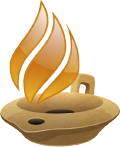 I’ve written before about how varied my use of Accordance tends to be. I use it for my own research projects, to do quality control checks of modules which are nearing release, to help with the occasional tech support question, in family devotions, in teaching a Sunday School class, and more. This usually means that I have dozens of tabs open at any given time, and it’s rare for all of them to be focused on the same task.
I’ve written before about how varied my use of Accordance tends to be. I use it for my own research projects, to do quality control checks of modules which are nearing release, to help with the occasional tech support question, in family devotions, in teaching a Sunday School class, and more. This usually means that I have dozens of tabs open at any given time, and it’s rare for all of them to be focused on the same task.
Since I’ve been using Accordance 10, I’ve noticed an interesting shift in my workflow. Where previously I would use a single workspace with a hodgepodge of tabs devoted to different tasks, I now tend to open a new workspace when I shift from one task to another. For example, my main workspace is devoted to a big research project I’m currently working on, but when I need to prepare my Sunday school lesson or lead a family devotion, I now go to the File menu, choose New Workspace, and then dedicate that separate workspace to the new task. By using separate workspaces for different tasks, I can be sure the resources I need for my Sunday School lesson don’t get mixed up with the ones I need for my research project.
The strange thing about this shift in workflow is that it happened naturally when I began using Accordance 10, even though I could have done the same thing (but didn’t) in previous versions of Accordance. Ever since we introduced the Workspace window way back in Accordance 6, you have been able to open multiple workspaces and dedicate them to distinct purposes. I just never did so until now.
I’m not sure what it is about Accordance 10 that prompted this change in behavior, but I suspect the move to a single-window interface has made the idea of opening multiple workspaces seem less daunting to me. Put another way, perhaps the integration of all those palettes has made managing multiple workspaces seem more palatable. (Pardon the pun!)
When I think about it, it wasn’t any harder to manage multiple workspaces when the Library window, Resource palette, and Instant Details Box stayed put in their respective places on my screen, but perhaps the presence of those separate floating windows made me feel like it would be harder to keep track of more than one workspace. Now that those palettes are integrated into each workspace, it is as if I can simply switch between two or more self-contained study environments. I therefore find myself doing that more and more.
This is just one example of how improving the design and aesthetics of a program can also enhance its usability.
What about you? Do you find the changes in Accordance 10 have affected your workflow in surprising ways?

